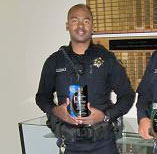9/21/2012
Oakland, California Raises, Then Shortens Yellow Time for RevenueOakland, California lengthens yellow times by one second, sees 56 percent violation drop, then shortens them to boost red light camera citations.

Officials in Oakland, California will meet Tuesday to decide whether to continue using red light cameras. City staff are recommending that the council's Public Safety Committee extend for another three years the agreement with Redflex Traffic Systems that expires September 30. The Australian photo ticketing company began issuing automated citations on Oakland streets in 2008.
So far, the controversial has generated a sizable number of tickets. From October 1, 2011 through June 30, 2012, Redflex mailed 14,425 citations worth $6.9 million. The city's cut of each $480 ticket is about $160 after the state and county governments take their share. Because Oakland has no systems to properly track what happens to the citations once Redflex drops them in the mail, staff can only estimate that the program generated $1.7 million in revenue for Oakland.
The city has been so focused on revenue that the police department officials who manage the contract with Redflex became irate when city engineers decided early on to add a second to the duration of yellow signal timing at the photo enforced intersections. The change produced immediate, positive results.
"As a result of an adjustment made in the yellow-light duration period at most of the red light camera enforcement system locations, revenues have decreased," an April 27, 2010 memo from the Oakland Police Department to the city administrator explained. "Prior to this adjustment and after the installation of the system, yellow lights were set at three to four seconds. This change in the yellow light timing has resulted in a reduction of approximately 40 citations per day. The Transportation Services Division (TSD) and OPD are continuing discussions of the impact of this change, and possible solutions."
The daily reduction of 40 violations represented the potential for millions in lost revenue -- a problem requiring a "solution." Excluding cameras that had not been fully operational prior to the timing change, the total number of violations immediately went down 56 percent with the longer yellows. This infuriated Oakland Police Lieutenant Anthony Banks Sr, who was in charge of working with the program vendor.
"What is the reason for the increase in the timing phase?" Banks fumed in a January 12, 2010 email to the Transportation Services Division manager Wlad Wlassowsky. "What needs to be done to have them changed back? This will obviously have an effect on the program that will require an explanation at the next report in April."
Banks cited the table in California's Manual of Uniform Traffic Control Devices (MUTCD), which presents the minimum accepted yellow time values, and argued it was inappropriate for Oakland to exceed these values. He argued the new signal settings upset the projections for the number of violations Redflex established when selecting intersections for camera enforcement.
"Based on your table you are accommodating speeds of 57 MPH on Northgate, 61 MPH on San Leandro and 55 MPH on Redwood just to name a few," Banks wrote in a January 20, 2010 email to Wlassowsky and city engineer Ade Oluwasogo. "Unless I am reading it wrong. This is in opposition to the posted 30 MPH speed limits. The reprogramming of these signals is especially discouraging since our surveys and intersection selections were based on the timing TSD had set previously, which was already higher than MUTCD."
A number of meetings were held and the engineers gave in to the pressure, agreeing to shorten the yellows.
"I wanted to follow up with you after our meeting this past Wednesday," Wlassowsky wrote in an April 23 email. "I have discussed the changes in the yellow light timing with Ade [Oluwasogo], and we have concurred that it is safe to return to the timing that was in place prior to December 28-30, when changes were made. We will initiate the changes as soon as possible, possibly as soon as next week."
State lawmakers were worried that some cities would treat minimum timing standards as if they were maximum allowable values. They adopted a law to clarify and encourage longer warning times.
"At an intersection at which there is an automated enforcement system in operation, the minimum yellow light change interval shall be established in accordance with the Traffic Manual of the Department of Transportation," Vehicle Code Section 21455.7 states. "A yellow light change interval may exceed the minimum interval established pursuant to subdivision (a)."
Oakland's experience is consistent with the finding of a 2004 Texas Transportation Institute report that concluded the addition of one second to the ITE minimum yellow standard yielded 53 percent reduction in violations (view report). This is so because the vast majority of violations happen within the first 0.25 seconds after the light changes (see chart).
Article Excerpt:The following chart shows the number of violations recorded 46 days before the timing change (11/11/09 through 12/27/09) compared to the number issued 46 days after the change (12/28/09 through 2/12/10).
Intersection Before After Yellow
Time
(after)% Change 66th Avenue / San Leandro WB 254 146 4.9 -42.5 66th Avenue / San Leandro NB 345 142 5.0 -58.8 Jackson St. / 7th St. 124 52 5.1 -58.1 MacArthur Blvd / 82nd Ave 212 95 5.1 -55.2 Foothill Blvd / High St 217 157 4.9 -27.6 High St / Brookedale Ave 418 101 4.8 -75.8 Total 1570 693 -55.9
Data as reported in the April 27, 2010 City of Oakland memo, with 27th and Northgate excluded because the installation date was too close to the date of the timing change. Documents courtesy of highwayrobbery.net


